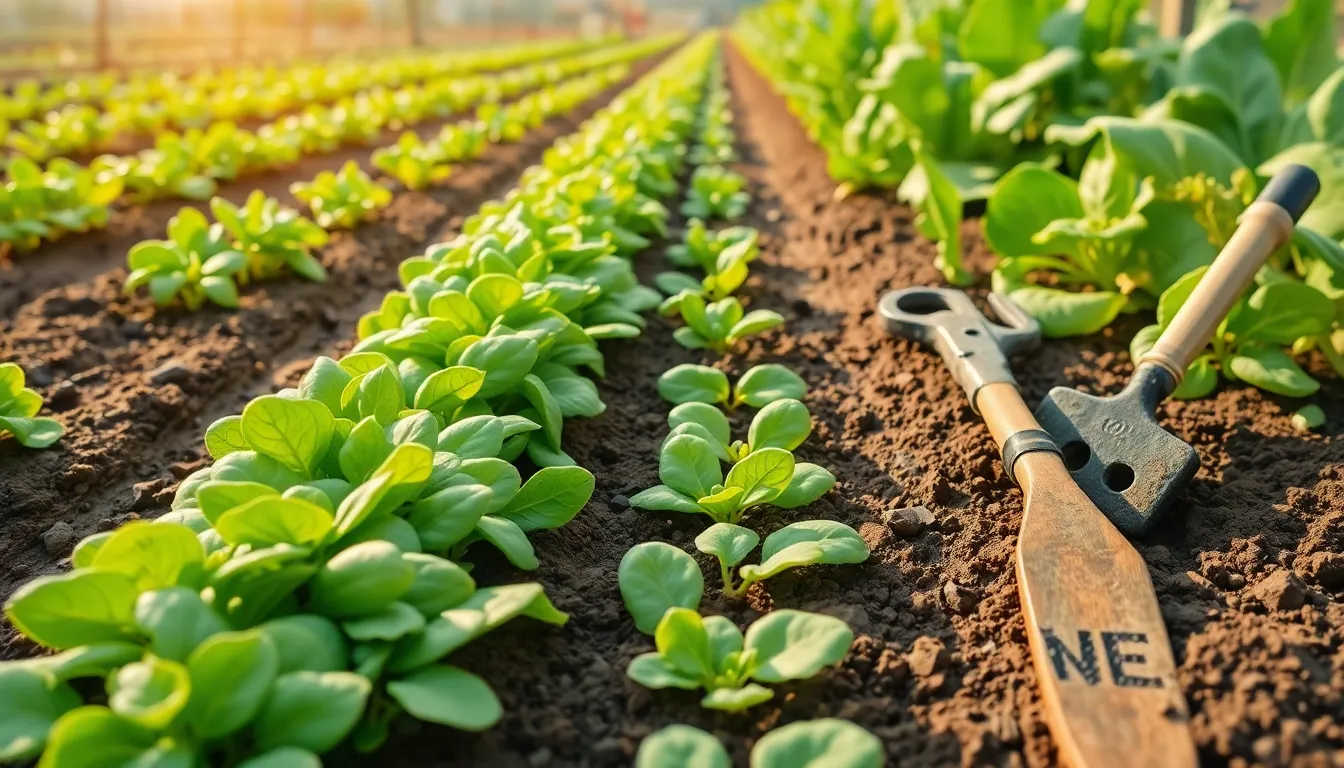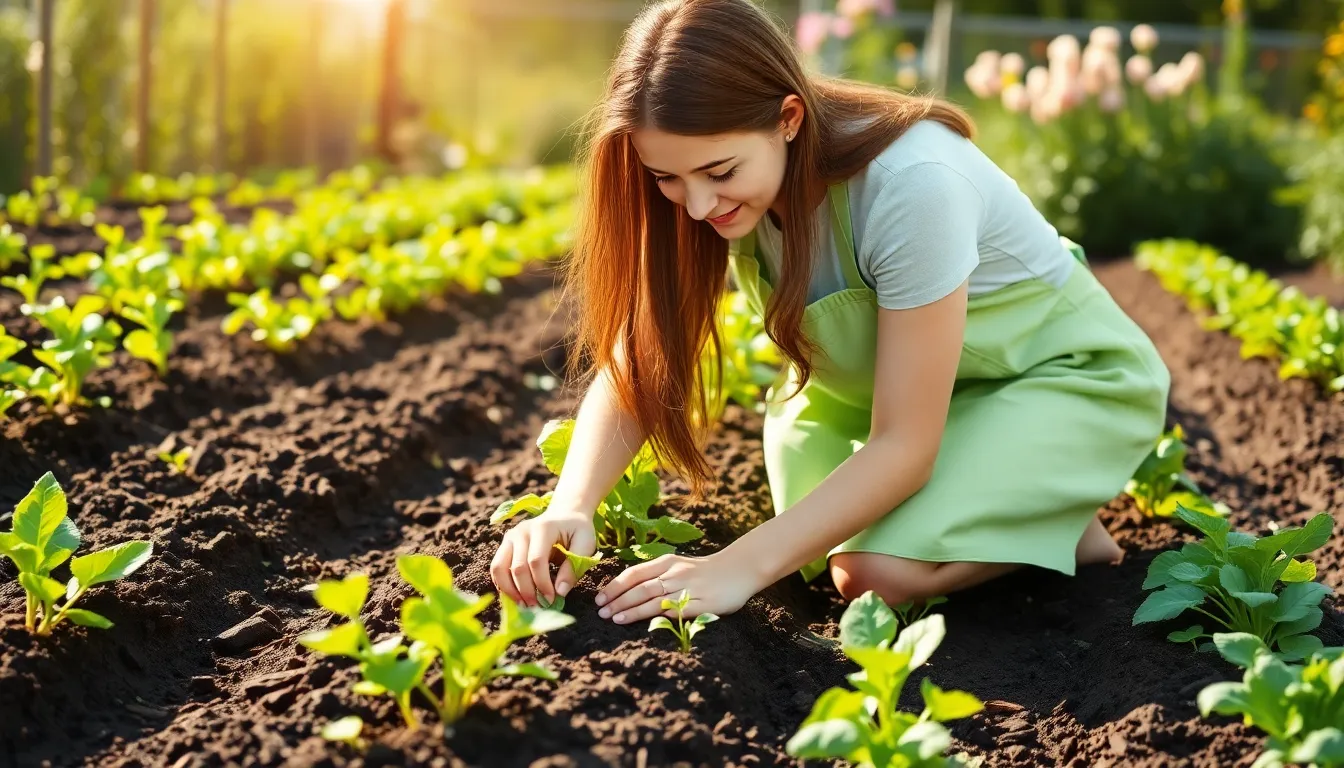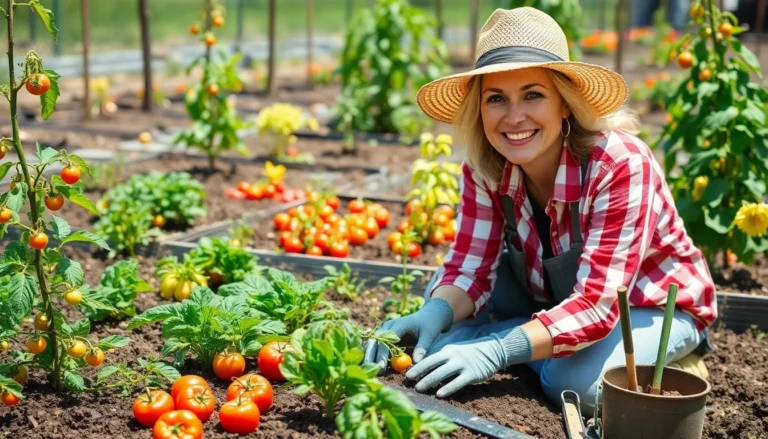As winter reluctantly releases its frosty grip, the garden awakens with the promise of vibrant spring vegetables. Picture this: fresh peas popping from their pods, crisp radishes bursting with flavor, and tender greens ready to jazz up any dish. Planting a spring vegetable garden isn’t just a hobby; it’s a chance to unleash your inner green thumb while enjoying nature’s bounty.
spring vegetables to plant
Planting spring vegetables offers multiple benefits. These advantages enhance health, promote sustainability, and support personal growth.
Nutritional Advantages
Spring vegetables deliver high levels of essential nutrients. Peas, for example, provide protein and fiber. Radishes are rich in vitamins C and B6. Leafy greens supply iron, calcium, and antioxidants. Incorporating a diverse range of vegetables into a diet bolsters overall health. Fresh produce can also improve mood and energy levels. Eating a variety promotes better digestion and maintains a healthy weight.
Environmental Impact
Planting spring vegetables supports local ecosystems. These plants reduce carbon footprints by minimizing transportation impacts. Pollinators, such as bees, thrive in gardens filled with diverse vegetables. Soil health improves through organic gardening practices. These practices often lead to enhanced biodiversity in local environments. Water usage also decreases with efficient gardening methods. By growing vegetables, individuals contribute to sustainable food systems.
Best Spring Vegetables To Plant

Spring brings a great opportunity to start a vegetable garden. Selecting the right vegetables ensures optimal growth and yields.
Cool-Season Crops
Cool-season crops thrive in the brisk temperatures of early spring. Peas, which grow well in cooler conditions, are a favorite for many gardeners. Spinach provides vital nutrients and can be harvested multiple times throughout the season. Lettuce varieties, such as Butterhead and Romaine, flourish in cooler temperatures and offer fresh greens. Radishes mature quickly, making them perfect for early planting. Broccoli establishes itself quickly, producing nutritious heads in a short time. Each of these crops offers excellent flavor and a high nutritional profile.
Warm-Season Crops
Warm-season crops prefer the heat and should be planted after the last frost. Tomatoes are a popular choice, yielding juicy fruit that enhances many dishes. Cucumbers grow rapidly and provide refreshing snacks and salads. Peppers come in various types, adding heat or sweetness to meals. Squash varieties, including zucchini, grow abundantly and are versatile in cooking. Beans, both bush and pole types, fix nitrogen in the soil and produce hearty harvests. Each of these crops contributes significantly to a vibrant spring garden.
Tips For Successful Planting
Successful planting involves several key steps to ensure vibrant growth for spring vegetables. Proper attention to soil and planting techniques lays a solid foundation for a productive garden.
Soil Preparation
Healthy soil is essential for robust vegetable growth. Test the pH and nutrient levels before planting to determine necessary amendments. Add organic matter such as compost to improve soil structure and fertility. Ensure that the soil drains well, preventing waterlogging that can harm root systems. Tilling the soil to a depth of 12 inches aerates and breaks up clumps, promoting root penetration. Mix in fertilizers that provide essential nutrients tailored to the specific vegetables selected for planting.
Planting Techniques
Sowing seeds at the right depth and spacing maximizes plant health. For small seeds, a depth of 1/4 inch works best, while larger seeds may need to be planted 1 inch deep. Use a ruler or garden marker for accurate placement. When transplanting seedlings, ensure that they are at the same depth they were growing in their containers. Water them immediately after planting to help establish roots. Lastly, consider the timing of planting concerning local frost dates to avoid damage to tender seedlings.
Seasonal Maintenance
Successful spring gardening requires ongoing maintenance, focusing on watering and pest control to ensure healthy vegetable growth.
Watering Practices
Watering practices play a vital role in plant health. Maintain consistent moisture without overwatering. Newly planted seeds and seedlings benefit from light, frequent watering, typically every few days, especially during dry spells. Deep watering encourages root development; do this once a week for established plants. Use a soaker hose or drip irrigation for efficient water delivery, minimizing evaporation and reducing weed growth. Monitor soil moisture levels by checking the top inch or two; if it feels dry, it’s time to water.
Pest Control
Pest control relies on vigilance and proactive strategies. Regularly inspect plants for signs of trouble, such as holes in leaves or visible insects. Introduce beneficial insects like ladybugs or lacewings to keep harmful pests like aphids in check. Consider using organic insecticidal soap or neem oil as targeted treatments for persistent issues. Companion planting can also deter pests; for example, planting marigolds alongside vegetables may repel nematodes and other harmful insects. Maintaining healthy soil contributes to plant strength, making them less susceptible to infestations.
Conclusion
Spring gardening opens up a world of possibilities for anyone looking to cultivate fresh vegetables. The joy of watching plants grow and thrive brings a unique satisfaction. By choosing the right crops and employing effective gardening techniques, anyone can enjoy a bountiful harvest.
Maintaining healthy soil and practicing good watering habits are key to successful gardening. Regular inspections and organic pest control methods help protect the plants while promoting a sustainable ecosystem.
As the season progresses, the vibrant colors and flavors of spring vegetables will not only enhance meals but also contribute to overall well-being. Embracing this rewarding hobby allows individuals to connect with nature and enjoy the fruits of their labor.




